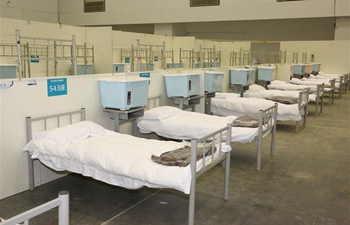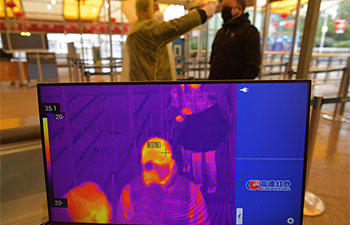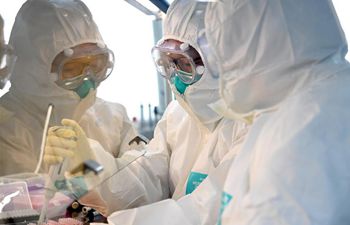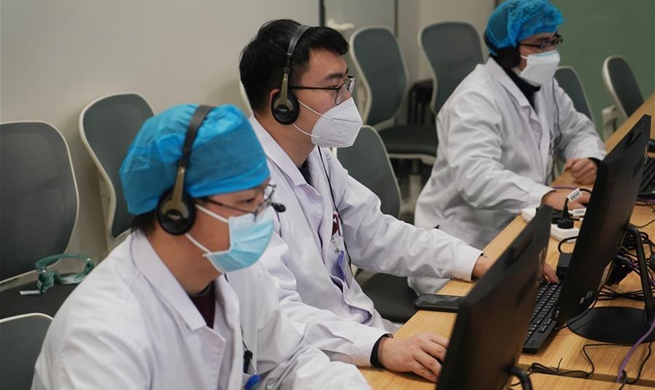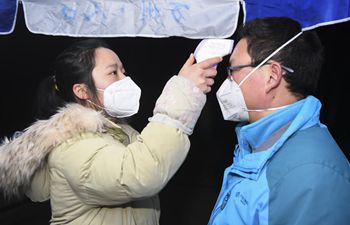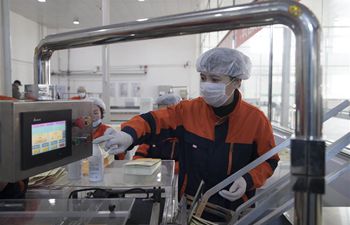LISBON, Feb. 7 (Xinhua) -- The Institute of Astrophysics and Space Sciences (IA) announced Friday that the first image transmitted by the European Space Agency (ESA) CHEOPS space telescope is "intentionally blurred" to allow "maximized measurement accuracy," Portuguese Lusa News Agency reported.
The image captured a star field centered on HD 70843, which is a yellowish-white star 150 light years away, because it has the ideal brightness and location for the tests, according to the IA.
"CHEOPS produces purposely out-of-focus images of the stars, in order to be able to distribute the light of each star over several pixels of the detector. This increases the accuracy of the measurements, as each measurement is less sensitive to variations in the response of each individual pixel or in the way how the telescope is aimed," according to the institute.
In a statement, the IA said that the protective cover of the space telescope opened on Jan. 29 and that since then, all systems have been prepared for the acquisition of this first image.
Investigator Sergio Sousa told reporters in Porto, a city in northern Portugal, that the image "brings prospects far better than those expected before launch," according to the statement.
"It may not be breathtaking or (have) the potential to inspire the public's imagination, but for those inside the project, it brings perspectives much better than those expected before launch, to achieve the scientific objectives of the mission," he was quoted as saying.
Antonio Gutierrez Pena, a director at Deimos, a company involved in the mission, said that everything seems to be "working perfectly."
"We are very excited and we hope that the mission will be fully operational within a short time," he said.
The mission of CHEOPS, or CHaracterising ExOPlanet Satellite, is to detect exoplanets, allowing for the estimation of their mass, density, composition and formation, as well as the time it takes to orbit their star.
The project is a joint endeavor of 11 European countries, with scientific participation in Portugal being led by the IA.




